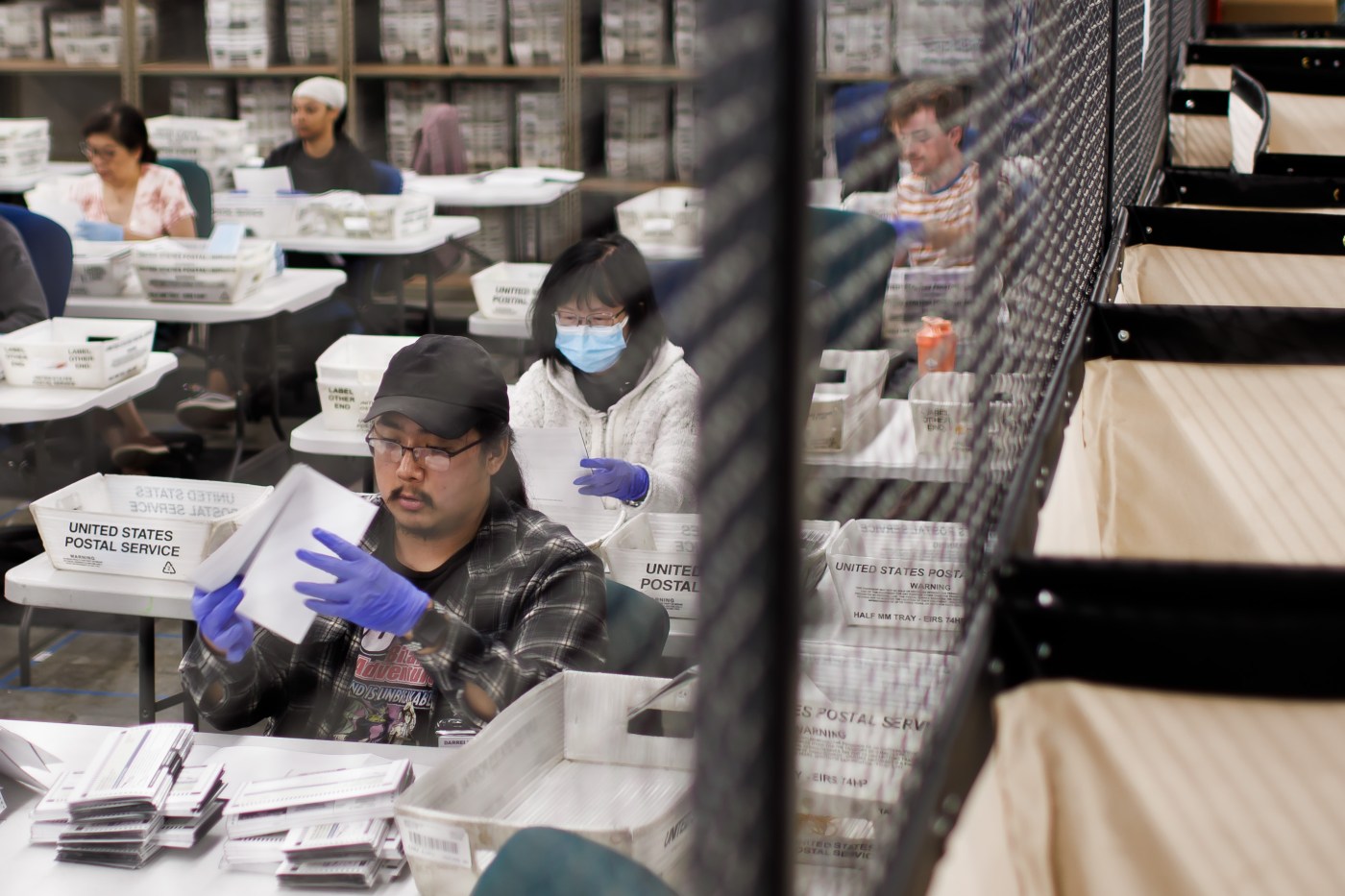Amid debunked but still widespread claims of voter fraud — fueled largely by former President Donald Trump and his allies — state election officials are actively reassuring the public that the mail-in ballot process is safe and secure.
This push to emphasize election integrity follows a survey conducted earlier this year by New York-based Brennan Center for Justice, a non-partisan policy think tank, that found 38% of local election officials reported experiencing threats, harassment, or abuse while performing their duties. Poll workers across the country say they have been targeted by those who believe the fraud conspiracy theories touted by election deniers.
Related Articles
Q&A: Plan to bail out Bay Area public transportation would tax voters
Santa Clara’s Measure I seeks to fund infrastructure needs with $400 million bond
Will Proposition 36 mean more deportations?
Assembly District 14 race highlights contrasting solutions to state’s housing problem
Morgan Hill mayoral election: Two familiar faces jockey in heated race to lead the city
At the San Mateo County Elections Division Office in San Mateo, the steady rustle of paper and hum of scanners fill a secured room as Election Day approaches. Here in this fenced-in warehouse-like room, hundreds of volunteers are preparing to count ballots from more than 442,000 registered voters.
San Mateo County, a predominantly affluent segment of a deep-blue Bay Area, hasn’t had any issues with election integrity in the past, but that hasn’t stopped officials from reminding the public that their vote is secure.
“San Mateo County has a sophisticated electorate, and everyone is concerned about ballot security,” said Assistant Chief Elections Officer Jim Irizarry. “Ensuring safe and secure voting at every level is critical to keeping the public informed.”
With that in mind, the county is taking precautions.
“We collaborate closely with the sheriff, Homeland Security, and the FBI to form a dedicated team focused on election security, ensuring that we are well-prepared,” Irizarry added.
County election officials have received calls from residents concerned about possible voter fraud, and asking questions about the ballot counting process, which Irizarry welcomes.
“Our motto is ‘Transparency is the foundation of election integrity.’ What we have here is a fair, open process that anyone can observe at any stage,” Irizarry said.
When an observer visits a ballot processing center, here’s what they will see:
— An election official first confirms the voter’s signature by comparing it to the one on the original voter registration form or any updated signatures from previous elections or the Department of Motor Vehicles.
— Once verified, the ballot is separated from the envelope to ensure voter privacy.
— The envelope is then stored for the legally required retention period, while the ballot is digitally scanned.
Inside a secure section at the San Mateo County Registration and Elections Division, an election worker prepares mail-in ballots for scanning on Thursday, Oct. 17, 2024, in San Mateo, Calif. (Dai Sugano/Bay Area News Group)
Scanned ballots, however, will not be counted or reported until voting closes at 8 p.m. on Election Day, Nov. 5.
Counties in the state will begin releasing results that same night. Officials expect 60% of early votes to be counted by Election Day evening, with the remainder processed within seven days.
If the signatures do not match, or if a ballot is not signed at all, the county will send a letter to the voter to allow them to rectify their ballot. Voters have until the end of the 28-day certification period, which concludes on Dec. 3, to cure their ballot.
Other Bay Area counties also have taken steps to encourage public observation of the ballot counting process and recruit volunteers.
Alameda County livestreams its ballot counting online, while Santa Clara County held an event last week to promote transparency.
“Our mission is to ensure fair, inclusive, accurate, and transparent elections for our voters,” said Matt Moreles, acting Registrar of Voters for Santa Clara County. “We take pride in our efforts to make voting more accessible than ever before.”
Contra Costa County has expressed greater concern than its Bay Area neighbors regarding election-related safety.
“My office and local law enforcement will work together to protect our fundamental right to vote in Contra Costa County,” said Contra Costa District Attorney Diana Becton in a press release on Tuesday. “Any threats, intentional disruptions, or acts of intimidation aimed at preventing citizens from legally voting or officials from administering an election will be met with accountability.”
While quantifying the effect of disinformation on election trust is challenging, Mindy Romero, a voting rights and electoral participation expert and director of the Center for Inclusive Democracy at the University of Southern California, emphasized that increasing efforts to combat it and rebuild public trust is “very important.”
Seen from a secure section at the San Mateo County Registration and Elections Division, election workers process mail-in ballots that have been picked up at drop boxes on Thursday, Oct. 17, 2024, in San Mateo, Calif. (Dai Sugano/Bay Area News Group)
“There is ongoing debate about the overall impact of disinformation on voter turnout, but we do know it can affect levels of trust, especially since 2020,” Romero said. “When people don’t trust our elections, it can potentially impact their belief in the system and their likelihood of voting.”
Public engagement by county election offices and civil society is a first step in combating disinformation and rebuilding trust, she said.
“The public needs help receiving clear, concise, and frequent messages about election administration. It’s essential that they hear this information from various sources, including political and civic leaders, to rebuild trust,” Romero said. “This information must be continuously and constantly disseminated. There’s a commitment required in terms of resources and knowledge to communicate these messages effectively.”
Unopened mail-in ballots are stored on a shelf on Thursday, Oct. 17, 2024, at the San Mateo County Registration and Elections Division in San Mateo, Calif. (Dai Sugano/Bay Area News Group)
Inside a secure section at the San Mateo County Registration and Elections Division, election workers prepare mail-in ballots for scanning on Thursday, Oct. 17, 2024, in San Mateo, Calif. (Dai Sugano/Bay Area News Group)
Inside a secure section at the San Mateo County Registration and Elections Division, election workers prepare mail-in ballots for scanning on Thursday, Oct. 17, 2024, in San Mateo, Calif. (Dai Sugano/Bay Area News Group)
Inside a secure section at the San Mateo County Registration and Elections Division, election workers prepare mail-in ballots for scanning on Thursday, Oct.17, 2024, in San Mateo, Calif. (Dai Sugano/Bay Area News Group)












